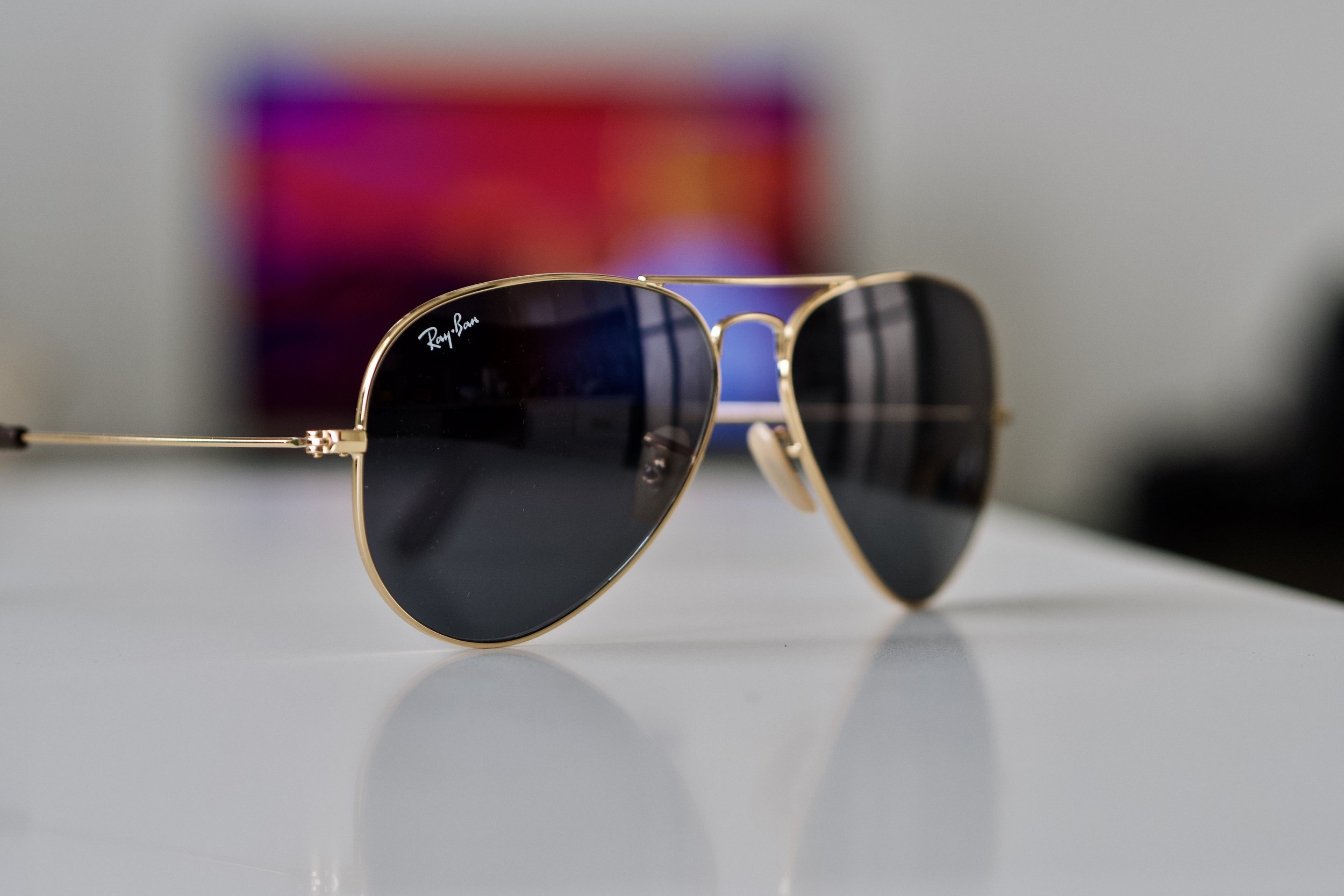I'm a sucker for badass sunglasses. By far my favorites are aviators and you can't go wrong with a pair of Ray-Ban. They are expensive but with metals frames and glass lenses, many also polarized, one will take extra good care of them when $150 or $200 is dropped.
Meet Ray-Ban Aviator @Collection. They are a special breed of their Aviators and these don't disappoint. The shiny gold frames are very pleasing with a gray/blue lens. I've had my eye on them for sometime.
I couldn't help but pick these up for my Spring and Summer needs. My images don't do them justice with that blue flair to them but they are a sexy pair of sunglasses. Comfortable and mostly neutral in color reproduction, they might be a touch on the cool (color temperature) side.
In direct sun, there is little lens flare or glare in your eyes and contrast is still very good. These are not polarized but hold their own with reflections. The medium dark is also good for every day use. Even if it is a touch cloudy, they aren't too dark.
This pair also feels a little lighter than my Aviator Flash sunglasses. Not sure why but it is welcome. I've never had a bad pair of sunglasses from Ray-Ban but a little weight off the bridge of one's nose is a plus.
The thing that really catches my attention about these comes from the ever so slight rose tint to the gold frames. That touch of detail in combination with the blue/gray lenses is something that I really love. The colors work really well together and shows attention to detail that makes me love good design so much.
One thing to note, these sunglasses do not work with Face ID on iPhone X. To be clear, this isn't, and won't ever really be a complaint but just information as Face ID does work with some sunglasses. My Aviator Gold, Yellow Flash sunglasses, for example, do while these do not.
Only opportunity these sunglasses have, when the inner lenses have any smudges or oil from eyelashes, etc. on them, it tends to be easily visible. While I clean my sunglasses frequently, mostly I don't see these smudges while wearing them. In this instance, and I can only hypothesize it is the coating or the color of the lenses in conjunction with the oils, I see these smudges in my vision. Not a big deal, but something I noticed within a few days of wearing them. However, it only seemed to be visible in direct sunlight.
I rarely do the whole "unboxing video/review" thing... I generally think they are kind of silly (no one cares that you get a warrant card in the box) but I was pleasantly surprised when I opened my package. Ray-Ban added a few fine touches to their @Collection packaging.
The box itself is a nice matte black—I am a big fan of sleek, simple packaging. Opening the box, I found that the usual case was replaced with a nicer embossed leather case. It's the little things that matter. In fact, honestly, I wasn't even going to write a review about these sunglasses right away but Ray-Ban's extra polish to this experience was so welcome and my new focus on Hexagon + Adrian's Gear relaunch, I waited to even wear them until I had a chance to write this section.
Ray-Bans are great and decently priced compared to some of the sunglasses out there. While that $160 average is a lot to swallow for some, Aviators are classics that will never die. I'll have these sunglasses for a long time.
Well constructed, adjustments on them for life, glass lenses, and amazing design, this will not be my last pair of Ray-Ban Aviator sunglasses. Many have tried to copy these and make their own versions but Ray-Bans are still the best.
Price: $163
Pro Tip:
If you have an American Express card, check out the offers in their app on online. I got $30 back on this Ray-Ban purchase—second time it has popped up for my card. Definitely take advantage of that little perk.





